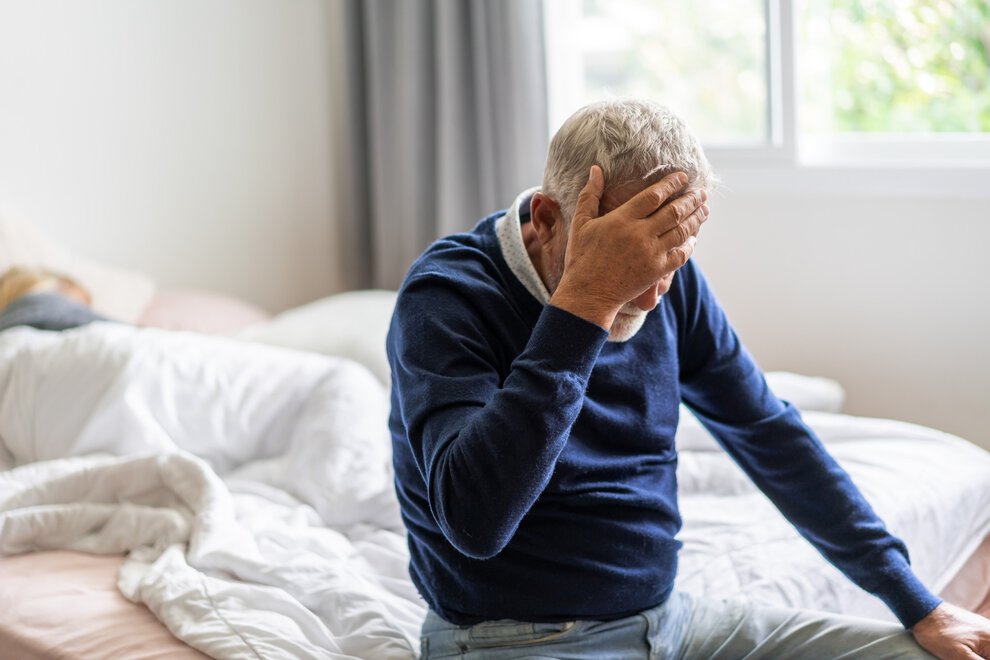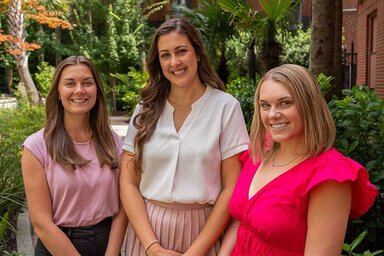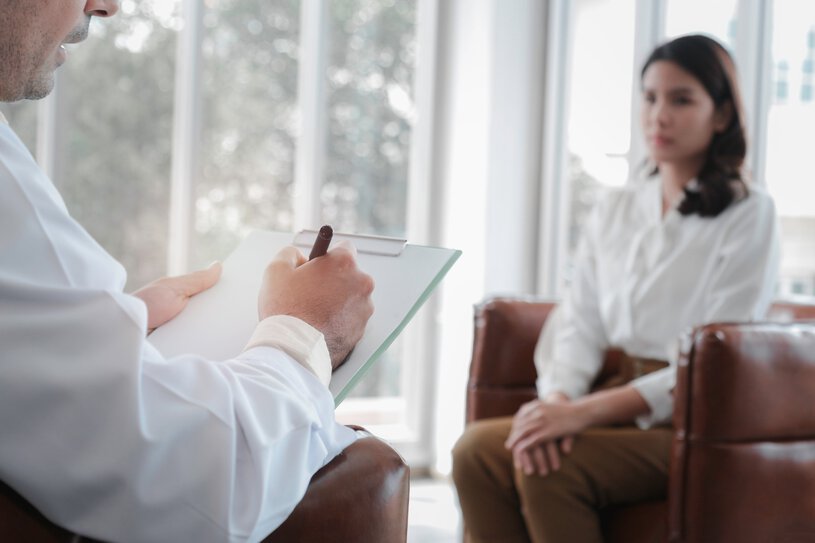
Electroconvulsive Therapy (ECT)
Expert care for hard-to-treat mental health conditions.
Patients struggling with certain treatment-resistant mood disorders are benefiting from advances in brain stimulation therapies at MUSC Health. Using the most effective evidence-based treatments and state-of-the-art equipment, our mental health experts can help manage hard-to-treat conditions with higher success rates and fewer of the side effects associated with classic electroconvulsive therapies.When should Electroconvulsive Therapy (ECT) be considered?
For most patients, antidepressants are effective in managing certain mood disorders. However, there is a significant number of people who have only a temporary or partial response to the medications, or in some cases, don’t respond to the treatment at all. Electroconvulsive therapy, or ECT, has been an effective brain stimulation treatment for many people with treatment-resistant mood disorders, including:
- Major depressive disorder (MDD)
- Bipolar disorder
- Catatonia
- Schizophrenia
ECT at MUSC: What to expect
Modern ECT has advanced so that your treatment is safe and well tolerated. You will be under anesthesia, and a muscle relaxant called succinylcholine is administered to completely relax your muscles. Soft electrode patches are placed on your face and temple. At MUSC Health, our advanced ECT finds the specific brain dose for each person and applies it in a briefer time to more focused areas of the brain involved with your mental health condition. The treatment lasts only a few minutes, then you will be awakened and are generally able to go home within an hour.
Patients typically receive about ten treatments spaced out over a period of three to four weeks. Some patients return for maintenance treatments. These might be one per week, or one per month, or as infrequent as once per year.
All patients respond differently. On average, between 70-90% of ECT patients respond with improvements from severe depression, with 50-70% of patients no longer having a major depressive episode.
We continue with clinical research treatment studies to refine and further improve the treatments for the future. Please reach out if you are interested in participating in clinical studies or let us know in consultation.
FAQs about ECT
There are many ways ECT may work. It may be related to changing the brain cell network communications that can be over-connected in depression. ECT appears to increase neurotransmitters, such as serotonin and dopamine. ECT also increases BDNF, brain derived neurotrophic factor, which can help the brain cells grow.
ECT is used for people with treatment-resistant depression, mania, and psychosis from schizophrenia. Most people receive ECT for treatment-resistant depression, when antidepressant medication and psychotherapy have not worked. ECT is commonly done on an outpatient basis, but may be done as inpatient treatment when patients require hospitalization due to high risk of suicide or inability to eat.
As a patient at the MUSC Health Department of Psychiatry, Brain Stimulation Division, you will receive bills from the physicians and from the hospital. MUSC Physicians (MUSCP) submits bills for the professional fees charged by its physicians. The Medical University Hospital Associate (MUHA) bills for hospital facility charges for the use of equipment, space, and supplies. Both MUSC entities participate with Medicare, BlueCross BlueShield, and various other payers and managed care organizations. They do not, however, participate with all payers. Regulations also require us to bill for deductibles and co-payments, even for those insurances with which we participate. Co-payments will be required before or at the time of service.
There are instances where MUHA participates with a health plan, but MUSCP does not. In this situation, you would be responsible for paying for the portion of your physician’s bill that your insurance plan does not cover. Depending upon your insurance, you may not receive a bill at all, but instead receive an explanation of benefits, which will outline what your insurance was charged and what was paid on your behalf.
Some insurance requires a prior authorization before you begin treatment. Without the prior authorization, you will be required to pay for all bills. Some insurers do not require a prior authorization, but whether an authorization is required, it’s still not a guarantee of payment. All payments are based on medical necessity and cannot be determined until the claim is processed. The medical documentation will be reviewed in order for the insurance company to determine payment. There is no guarantee how much is covered and if insurance does not cover the charges, then the patient is responsible for payment.
Some people choose to pay out of pocket for procedures, either because insurance is not covering treatment or because patients do not want to use insurance. Most patients paying out of pocket for ECT are eligible for 50% discount in total charges. Even so, an ECT series is still generally expensive to pay out of pocket. You may request contact with Shayna Epstein at 843-792-1879, the Brain Stimulation Service hospital business manager, for questions about out of pocket costs for ECT.
The night before ECT, patients are asked not to eat or drink anything after midnight and until after their ECT treatment the following day is completed.
The morning of ECT, patients arrive to the waiting area and generally complete a clinical survey. The patient enters the ECT suite and meets with the ECT nurse, psychiatrist, and anesthesiologist. Monitors are placed on the patient’s chest and head, and an IV is placed in the arm.
During the procedure, the patient receives a brief-acting anesthetic, which puts the patient to sleep for approximately 7 minutes. A muscle relaxant is given shortly after the anesthesia to loosen the patient’s muscles so that there are no motor convulsions during the therapeutic seizure. Patients are not awake for the actual seizure, as they are under anesthesia. The seizure itself tends to last 20 to 60 seconds, but can last as long as 3 minutes.
Patients wake up several minutes after the seizure stops. Patients are then transferred to the recovery area. They stay until blood pressure and alertness have returned to normal, which usually takes about 20 minutes.
An ECT session takes about one hour, total. There is time for patient assessments before treatment, receiving treatment (20 minutes), resting in the recovery area (20 minutes), and getting transferred back to a unit (inpatient) or to the driver's vehicle (outpatient). Generally, ECT is scheduled three times a week for a total of eight to twelve sessions. Though some patients may need more or fewer treatments.
ECT remains the most effective antidepressant treatment, with a greater response rate than antidepressant medication. ECT eliminates a depressive episode in over 55% of patients, with a marked reduction in depression in another 20 to 30% of patients. Although ECT is effective in the short-term to get out of depression, without the addition of antidepressant medication during and after ECT, patients can relapse quickly. For this reason, we request patients take antidepressant medication during and after ECT. Some patients may continue receiving ECT periodically to prevent relapse.
An acute series of ECT involves a patient receiving ECT three times a week for 6 to 12 treatments. This is more common for treatment-resistant depression or other conditions that respond to ECT. Generally, we will offer an acute series of ECT only. Many patients remain well while staying on antidepressant therapy, such as nortriptyline and lithium.
Maintenance ECT is for patients who cannot remain well after an acute course of ECT. For patients who relapse back into severe depression within a year, we commonly will offer another acute course of ECT followed by maintenance ECT. The maintenance schedule is a taper of ECT with a goal of once-per-month ECT to maintain benefit. The ECT taper from an acute series to a maintenance schedule is generally once a week for 4 treatments, then every 2 weeks for 4 treatments, then every 3 weeks for 4 treatments, then every 4 weeks. There is no limit on how long a patient can receive maintenance ECT provided the treatment is effective.
Patients are not allowed to drive during the entire ECT course and for 2 weeks after the last treatment in an acute series of ECT. An acute series is usually 3 treatments a week for 6 to 12 treatments. Patients who receive maintenance ECT can drive except on the day of ECT.
The immediate side effects of the procedure may include:
Headaches, which are commonly relieved with ice packs and ibuprofen after ECT. If that doesn't help, Toradol IV may be added at the next ECT treatment to prevent headache.
Nausea: IV Zofran may be added at the next ECT procedure to prevent nausea.
Muscle aches: These tend to occur in the first and second treatments and tend to resolve thereafter.
Disorientation and confusion: Some patients develop memory problems associated with ECT. Memories developed around the time of ECT have a greater chance of not being recalled, while those formed long before ECT generally are not altered. The ability to form new memories can be impaired during and after an acute series of ECT treatments. But this ability makes a full recovery in about 2 weeks from the last treatment.
Family members commonly see progress in the patient’s activity before the patient actually feels better. So the ECT treating team requests the family’s feedback in assessing a patient’s improvement. Family members can assist with transportation and supportive care after ECT. Families can also let the ECT nurses and physicians know of any concerns they may have about the patient’s care.
Recent ECT news and stories







